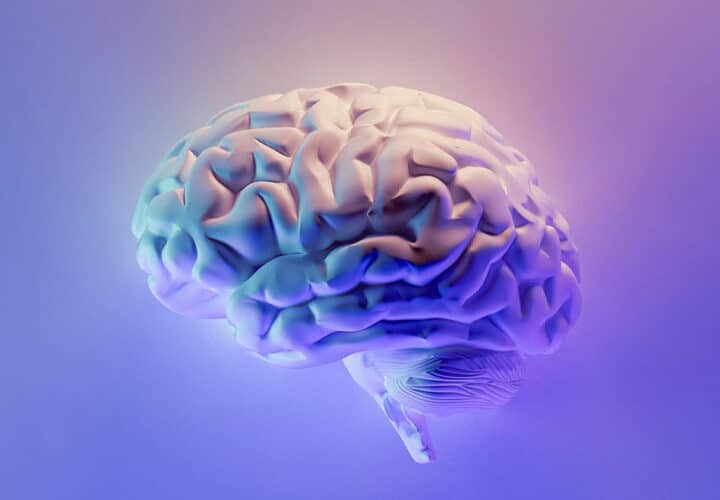From the nature of Alzheimer’s to the solutions available for controlling it, here are five common misconceptions to dispel.
Alzheimer’s is the sixth leading cause of death in the United States. Yet, there is so much about the disease, its impacts and its treatment that is frequently misunderstood. While awareness is building, thanks in part to the work of advocacy groups, of celebrity advocates, and to Hollywood movies like The Father (2020) which portray realistic depictions of the disease and its impacts on families, there is still a long way to go. Here are five of the most common myths associated with the disease.
Myth #1: Alzheimer’s and dementia are different diseases
The relationship between the neurodegenerative disease Alzheimer’s and the neurodegenerative condition of dementia can be a bit confusing: Some people assume Alzheimer’s and dementia are two separate diseases. In fact, dementia is the blanket term for a group of conditions that all share similar cognitive, behavioral and motor symptoms. These symptoms include memory loss, cognitive dysfunction and impairment of judgement and social abilities.
Alzheimer’s, on the other hand, is a neurodegenerative disease that comes with these symptoms. Alzheimer’s dementia is the most common dementia out there.
Types of dementia can be classified by their pathology, such as misfolded proteins that accumulate in the brain, or parts of the brain that are affected. Alzheimer’s causes a progressive dementia — a dementia that isn’t reversible — defined by certain biomarkers, like beta-amyloid and tau protein deposits in the brain. Other types of progressive dementia include vascular dementia, Lewy body dementia and frontotemporal dementia.
Myth #2: If an older adult is experiencing memory loss, it’s probably Alzheimer’s
There is a general assumption that older adults with memory loss or cognitive lapses are coming down with a neurodegenerative disease like Alzheimer’s or another form of dementia. While a certain amount of memory loss is common with aging, occasionally misplacing an item or forgetting the name of someone you just met doesn’t necessarily point to a neurodegenerative disease.
That said, it can be difficult to tell the difference between normal memory loss and dementia. The Alzheimer’s Association has identified 10 differences between Alzheimer’s and normal aging. They include forgetting important dates and events, and difficulty completing daily tasks such as grocery shopping or keeping a track of monthly bills. There could also be difficulty in keeping a track of conversations, as well as losing track of time or the place that one is in. Learn more here about the first symptoms people might experience leading up to a dementia diagnosis.
Myth #3: Only older adults get Alzheimer’s
Considering how common Alzheimer’s is — affecting one in three people over the age of 85 — all of us may be aware of a distant or even a close relative who is an older adult with dementia.
However, while most people with Alzheimer’s are 65 and above, one in 20 people with Alzheimer’s develop symptoms in their 30s, 40s and 50s. This is called early-onset Alzheimer’s. It is not uncommon for people who experience early-onset symptoms to go longer before getting an accurate diagnosis, as healthcare providers often do not test for neurodegenerative diseases in younger patients.
Want to learn more about clinical trials
for Alzheimer’s and dementia?
Check out the Lilly Trial Guide.
Multiple studies have found that in people who had a traumatic brain injury (TBI), the risk of dementia and Alzheimer’s increased. The risk further increased in people with more severe and multiple TBIs. Some studies indicate that the risk of being diagnosed with dementia increases by four to six times within one year following traumatic brain injury.
Myth #4: Risk factors for Alzheimer’s are beyond our control
There is a misconception that genetic or hereditary risks are the sole factors that predict Alzheimer’s. While a small percentage of Alzheimer’s cases are due to gene mutations, many of the risk factors for Alzheimer’s are related to lifestyle or environment. While age is a risk factor beyond control, others are not — and modifying them could prevent as many as 40 percent of the world’s dementia cases.
Diet and exercise
Lack of exercise and an unhealthy diet have been linked to a higher incidence of dementia. However, research has shown that people who eat healthy diets — for example, those who follow a Mediterranean diet or have a physical exercise regimen — have a lower dementia risk.
Alcohol and smoking
Several large studies have shown that alcohol use can lead to a higher risk of dementia. Smoking can lead to the same.
Cardiovascular diseases and diabetes
Hypertension (high blood pressure), high cholesterol as well as poorly controlled diabetes are significant risk factors for dementia. Getting these factors under control can reduce a person’s chances of developing dementia or help delay the onset of symptoms.
Myth #5: Alzheimer’s is a death sentence
Currently, there is no cure for Alzheimer’s. But unlike the assumption that Alzheimer’s takes over and destroys one’s life within months, many people with Alzheimer’s still live beyond the average lifespan of the general population. Research has found that most people with Alzheimer’s live for an average of between five and 20 years after a diagnosis, but every case is different. Lifestyle modifications and certain medications may help control symptoms or delay the arrival of severe symptoms for longer.
George Rook was diagnosed with mild cognitive impairment about five years before he received a dementia diagnosis. “I went to my local general doctor and I said, ‘Look, I think I need to be referred.’ He said, ‘Well, what’s the point? If it’s vascular dementia, there’s no treatment for it. Nothing would change. I’m not going to refer you,'” Rook recalled in a Perspectives LiveTalk with Being Patient — part of a series of talks about living life to the fullest despite dementia. “He said the same thing a year later, and it was only the following year when I went with my dear wife, we both just sat there and said, ‘You are going to refer me.’ […] I was told by the people who provided the diagnosis, quite literally, ‘Don’t take any risks. Don’t get tired. Stop doing as much.’ That was exactly the wrong thing to be told. It was all about being disabled, rather than enabled.”
It is important that myths around Alzheimer’s continue to be dispelled, in order to assist people with dementia, and to create awareness around a debilitating disease. Although we have made progress on that front, we clearly still have a long way to go.



